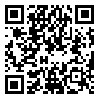BibTeX | RIS | EndNote | Medlars | ProCite | Reference Manager | RefWorks
Send citation to:
URL: http://rjms.iums.ac.ir/article-1-4644-en.html
Background: With the advancement of human society and changes in lifestyles, metabolic diseases and obesity are expanding rapidly among human populations. Researchers want to find new indicators to obtain comprehensive information about the fitness and health status. This study aimed to investigate the relationship between health and anthropometric indices with handgrip strength, physiological indices and the 2D:4D ratio in children 8 to 15 years.
Methods: Participants in this study were 362 boys with an average age of 11.78±2.32 years, height 151.39±15.79 cm and body mass 38.06 ± 10.87kg. After completing the consent by their parents, anthropometric indices (body mass, height, sitting height, elbow width, knee width, leg length, arm circumference and calf circumference), second finger (index finger) and fourth finger (ring finger) sizes, health indices (BMI, WHR, fat percentage) and physiological (strength, speed, endurance and flexibility) were measured.
Results: The results show that the 2D:4D ratio and handgrip strength is a significant relationship with health indices and anthropometric indices except body mass and sitting height (p≤ 0.05). According to the results, significant correlations (p≤ 0.05) were found between other physiological indicators with health and anthropometric indices except sit-ups and running 20 meters with BMI.
Conclusion: According to the results, some of studied indicators can be used to examine children's physical health and fitness level.
| Rights and permissions | |
 |
This work is licensed under a Creative Commons Attribution-NonCommercial 4.0 International License. |





